One of the staples of the sweet side of the kitchen, this Basic Pastry Cream,…
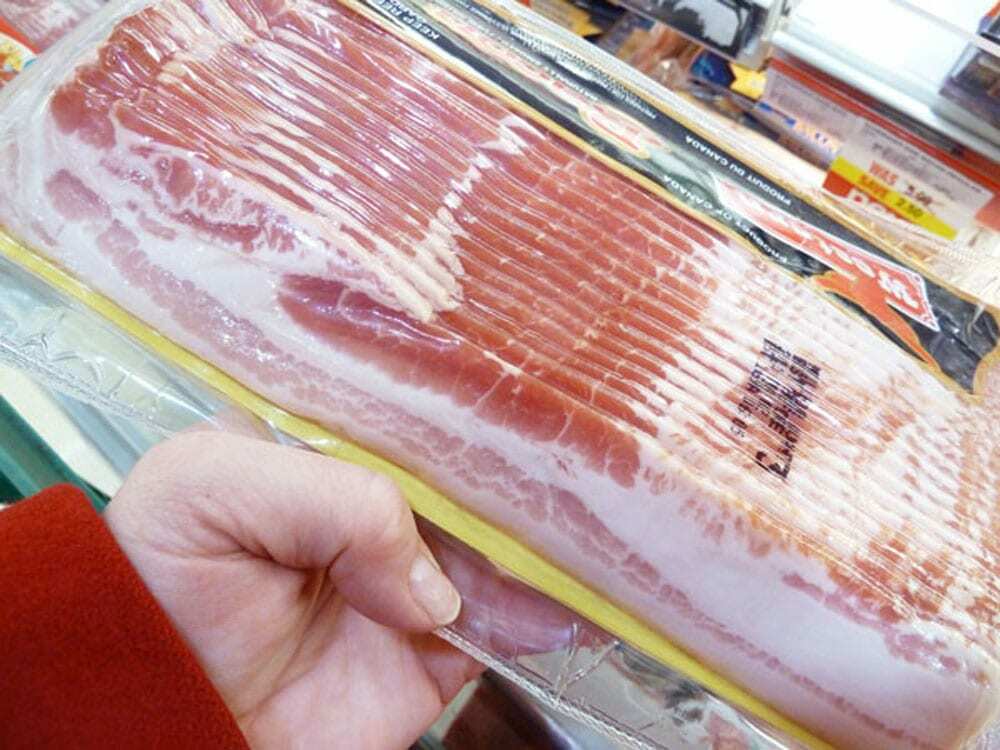
Know Your Bacon
Let’s Talk Bacon. The Food Gypsy Guide to all things BACON.
It dawned on me whilst planning Sunday “slabs of religion” posts the other day that there are so many options when it comes to bacon and pork belly products in general.
Time for an installment of Food Gypsy ‘CSI’ (Corinna’s Secret Ingredient). Get to know your bacon.
Most (pork consuming) cultures have their own version of bacon or cured pork. Some are smoked. Some are sweet. Some are straight and flat. Some are round and lean. Some are round and streaky. Some are oblong. Some are square, and all are salt cured pure pork joy.
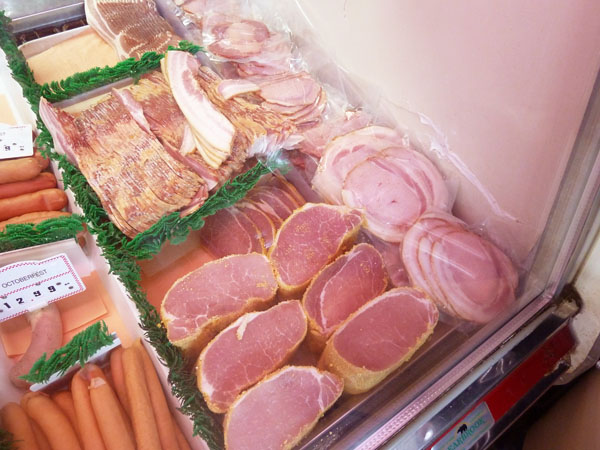
Then we have variations on a theme… double smoked, pepper crusted, maple cured bacon. Each with a unique flavour profile, adding something different to each application.
Consider this a primer of sorts on bacon – a reference point. This way, instead of redundant explanations we can simply point you back to this post if you are fuzzy on just what we mean when we say “Whiltshire Bacon”… and we will say “Whiltshire Bacon” because we just LOVE that stuff.
So — just what is bacon anyway?
Simply put – bacon is pork that is cured using large quantities of salt, either in brine or in a dry packing; the result is fresh bacon (also known as green bacon).
Fresh bacon can be further dried for weeks or months in cold air, boiled, or smoked. Fresh bacon must be cooked before eating. Boiled bacon is ready to eat, as is some smoked bacon, but may be cooked further before eating.
Bacon is prepared from several different cuts of meat.
It is usually made from side and back cuts of pork, except in the United States, where it is almost always prepared from pork belly (typically referred to as “streaky”, “fatty”, or “American Bacon” outside of the USA).
The side cut has more meat and less fat than the belly, and is typically the cut you would find in the United Kingdom as ‘bacon’, most traditionally referred to, in North America, as – Whiltshire Bacon.
Bacon can also be prepared from two distinct back cuts: fatback, which is almost pure fat (no photo reference), and pork loin, which is very lean. Bacon-cured pork loin is known as Back Bacon or Canadian Bacon
In France, they don’t use bacon but Salt Pork (then cut into pieces they call Lardons) — the difference being the brine (or dry packing). Also, Salt Pork is not smoked. When used in (classic) French cooking, Salt Pork is first blanched to remove impurities then cut and cooked, making it less salty and more tender.
In China and other Asian nations; salt pork and salted, dried pork belly, double for what we in North America would typically call ‘bacon’. (photo reference to follow)
Bacon brine also has added curing ingredients; most notably sodium nitrite, and occasionally sodium nitrate or potassium nitrate (saltpeter); sodium ascorbate or erythorbate are added to accelerate curing and stabilize color.
Bacon is not ham.
Here again, the difference is in the brine, as well as the various flavourings used such as brown sugar or maple syrup. Today, a brine for ham, but not bacon, includes a large amount of sugar. Historically, “ham” and “bacon” referred to different cuts of meat that were brined or packed identically, often together in the same barrel.
If sugar is used in a bacon process, sodium polyphosphates are added to improve sliceability and reduce spattering when the bacon is pan fried.
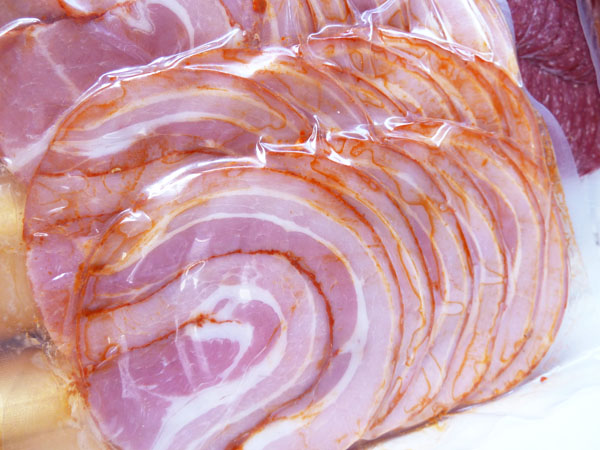
In Italy they have Pancetta, a streaky cured bacon, which is often formed round (super convenient on top of a burger). Some refer to prosciutto as a bacon, I’ve heard it called “the ceviche of bacon” but if you go by the traditional definition, accounting for both cut and curing technique – prosciutto would be qualified as a ham so the “the ceviche of ham” would be a more correct reference (but not nearly as catchy).
I love to cook with bacon, it truly is one of my favourite (not so) Secret Ingredients.
I love the creamy fat that pork offers and the salty, often smokey, flavor that bacon brings to meats, seafood, sauces, sandwiches, vegetable dishes… ice cream… tooth paste. (It’s been done. And you thought I had a bacon problem. Ha!)
Study up. There will be a quiz — plus multiple applications.
Because everything’s better with BACON.
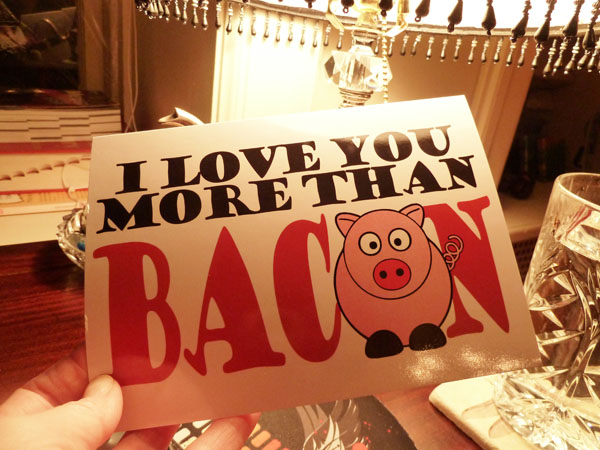
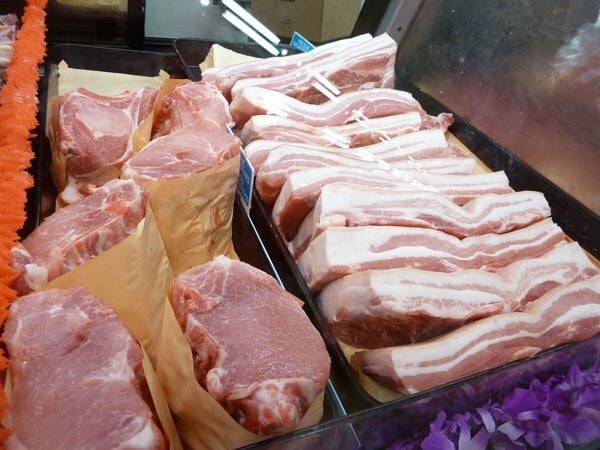
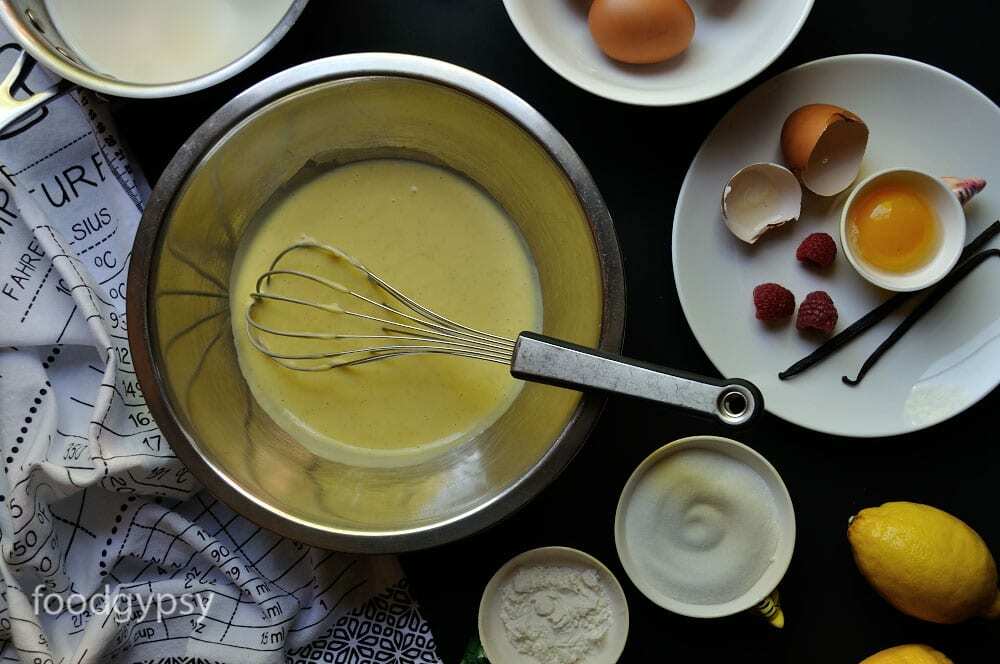


[…] Know Your Bacon | Food Gypsy […]